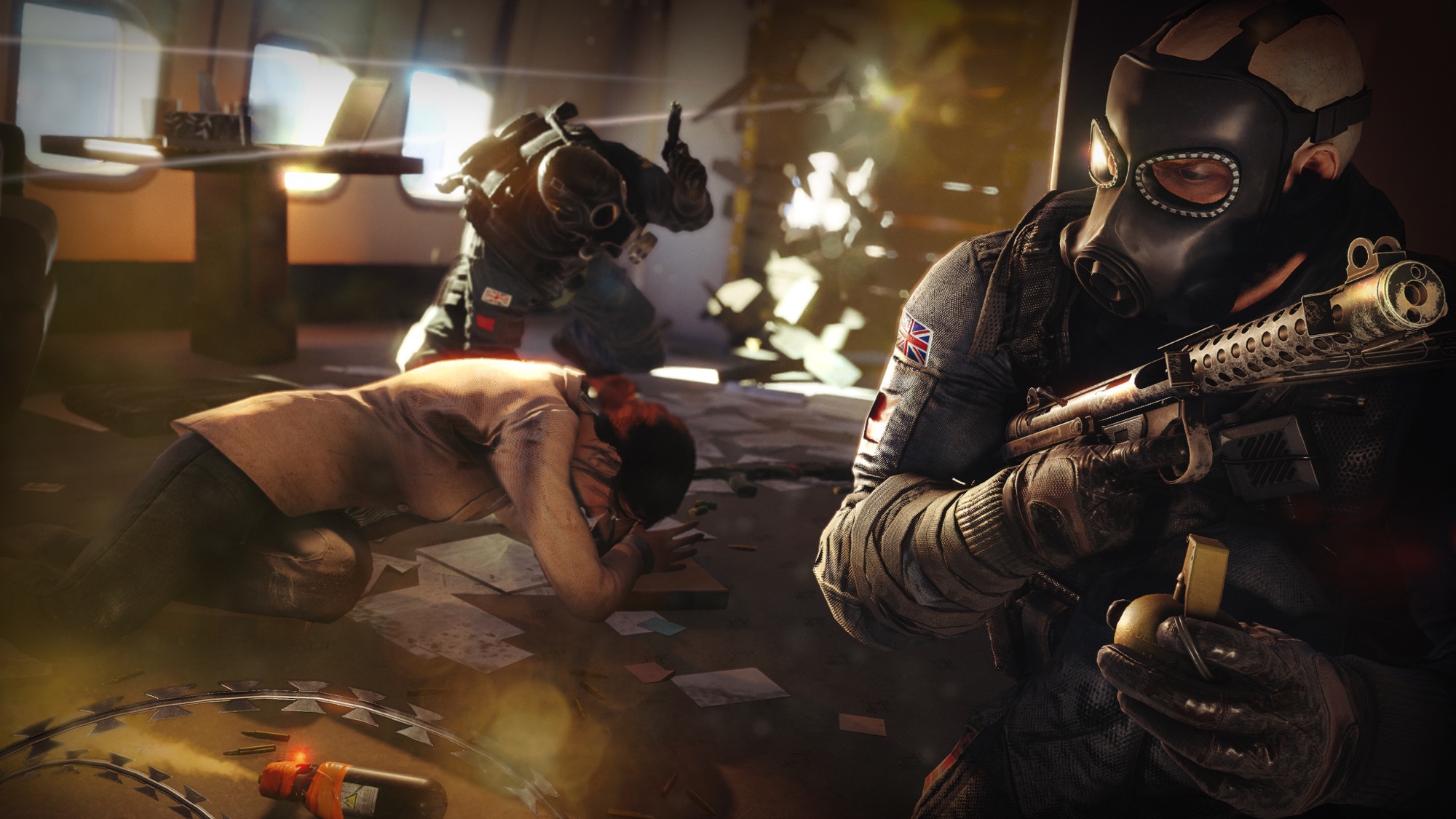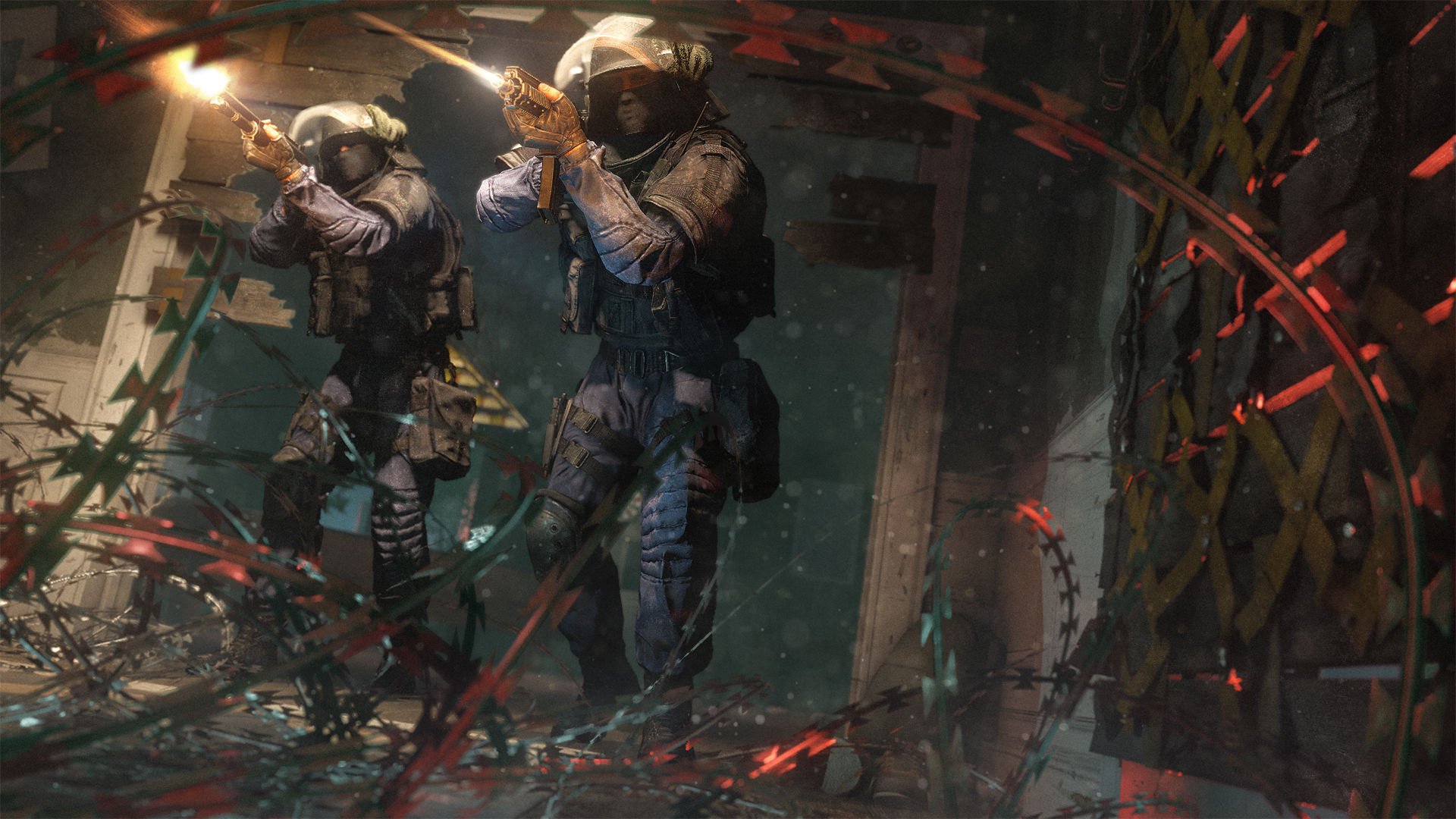How to get into Rainbow Six Siege in time for its second season
Everything you need to not only get started but also grow as a player.

With an emphasis on teamwork and strategy, Rainbow Six Siege is one of the best multiplayer shooters released in years. Players must work together in each round to achieve victory. Each operator character brings something different to the fight, and a successful team knows how to exploit these tools to manipulate the environment, gather intelligence, and control the flow of combat. Siege is like a game of chess: the victor is the one who can infer their opponent's strategy and adapt against it while executing their own.
That means Rainbow Six isn't the kind of shooter you can just hop into and expect to be a pro. Being knowledgeable and clever are far greater assets than impeccable aim. With a new season on the horizon bringing eight new operators and more maps, there's never been a better time to find out how Siege redefines tactical shooting. This guide will provide everything you need to get started and, more importantly, give you the foundation you need to grow.
Back to basics
Rainbow Six is a hardcore FPS where teams of five do battle across three objective-focused game modes based on attack and defense. Each map centers around a building or complex with decentralized access points that give attackers an unparalleled amount of freedom to decide where and how to infiltrate. Whether you're trying to defuse a bomb by placing and then guarding a defuser, rescuing hostages and escorting them to safety, or simply taking a room and holding it for a set amount of time, preparation is everything in Siege.

Before any shots are ever fired, each round starts with a brief preparation and scouting phase. For the attacking team, their mission is to use small, wheeled drones to recon where the objective is located and what operators the enemy team is using. The defenders, meanwhile, are trying to destroy the drones while preparing for infiltration by reinforcing walls, barricading doors, and setting up all kinds of nasty traps to funnel attackers towards deadly ambushes.
On defense, focus on applying your resources where they'll be most effective. Typically that means near the objective, where attackers are forced to move toward. For an attacker during the prep phase, try to keep your drone alive and gain information about how many defenders are on the objective—knowing how many 'lurkers' are roaming the map on defense is a key point of intel. There are no respawns during a round, so knowing these details can make a massive difference.
When you first start playing Siege, know this: you're going to suck. There's a wealth of nuance to familiarize yourself with before you'll begin to feel confident behind the sights of your favorite operator. Before you do anything, play through the tutorial to learn the basics. Once you've done that, consider playing the co-op Terrorist Hunts against the AI to help get a feel for some of the map layouts and your first operators (which we'll cover in a minute). Don't worry too much about jumping into multiplayer, however. It can be intimidating at first, but before long you'll begin finding your bearings.

One of Siege's most original operators is Valkyrie, who can place extra cameras around maps to gather intel for her team. When used well, she feels like playing with wallhacks and highlights what makes Siege such a unique shooter.
During those first few matches, always stick close to your team and observe how they move through the map. Take it slow, lean to peek around corners, and always keep one eye on the floor for traps that can instantly kill you.
The biggest gaming news, reviews and hardware deals
Keep up to date with the most important stories and the best deals, as picked by the PC Gamer team.
Sound is a crucial resource, both in gathering intel and communicating. A good microphone and quality surround sound headphones will help you determine where enemies are coming from and what abilities they might be using. Just about everything in Siege—from the hiss of a breaching charge to the static noise of a signal jammer—has a sound cue you can identify to help your team react to danger. When you die, ask yourself what happened and how you could have prevented it. This round's mistake becomes next round's game-winning strategy when you take the time to observe and learn from your enemies.
With that out of the way, let's address some key concepts.
ENVIRONMENTAL DESTRUCTION
Walls, floor, windows, and doors can all be destroyed to create new access points in a level. Where a defending team might have booby trapped a hallway, attackers can flank from above or behind. Most non-metal walls can be destroyed outright, while floors can only be destroyed completely at certain access hatches. Destructible walls and floors can also be partially damaged to create 'murder holes' for both teams, granting strategic lines of sight on unsuspecting enemies. Here's a great video guide to illustrate what I'm talking about.
Likewise, the defending team can reinforce walls and doors to hinder the attacker's movement and sight. Focus on reinforcing walls in the objective room first and if there's a ceiling hatch above you, run upstairs to reinforce that as well. Each defender can reinforce only two walls/hatches and but an unlimited number of doors.
CAMERAS
Siege redefines fog of war. Intel is a huge asset and both teams have their own methods for finding out what the other might be planning. For attackers, the preparation phase begins with each player using drones to locate the objective and identify enemies. Once the round actually begins, each player has at least one other drone they can deploy for further reconnaissance. These drones are a critical resource and should not be sacrificed lightly. When piloting one, be as inconspicuous as possible and try to position them with a good angle on entrenched defenders or in objective rooms when you're done using one. Dead teammates can access their team's drone cameras (but can't pilot them) to hopefully provide further intel.
Defenders don't have access to drones, but security cameras located on the inside and outside of every map can inform them of where the attackers are coming from and what their team composition is. Camera locations are always the same, so competent attacking teams will be quick to take them out before they have a chance to be used against them.
Both drones and cameras can mark targets for the rest of the team to see. However, doing so notifies the enemy team that they have been spotted—often leading to them finding and destroying the drone or camera. This is where voice communication plays a huge role, as being able to call targets verbally allows teams to not risk their hidden drones or overlooked cameras. If you have to mark a target, do so sparingly and when they seem distracted. Marking them multiple times within a few seconds is just asking to have that valuable source of intel destroyed.

EQUIPMENT
The most unique aspect of Siege is that each operator has a suite of special abilities and weapons that are unique to them. Some can place extra cameras or anti-grenade defense systems, while others pilot flying drones or detect heartbeats through walls. Knowing every operator's ability should be one of your first goals. Some abilities are practically essential, like Thermite's special breaching charges that can blast through reinforced walls where normal charges can't. Knowing each operator's ability lets you determine their likely strategy and how to counter it. For example, if the attackers spot Caveira during the prep phase, they should know to stick together as she can interrogate lone players to reveal the location of the attacking team to her allies for a few precious seconds. Just as important, by knowing every operator's ability, you can determine how to compliment your own team by filling important gaps in their composition. When attacking, there should always be a Thermite or a Hibana to handle reinforced walls.
On page two, we dive into what operators to pick first and how to go from a sniveling recruit to bad-ass killer.
With over 7 years of experience with in-depth feature reporting, Steven's mission is to chronicle the fascinating ways that games intersect our lives. Whether it's colossal in-game wars in an MMO, or long-haul truckers who turn to games to protect them from the loneliness of the open road, Steven tries to unearth PC gaming's greatest untold stories. His love of PC gaming started extremely early. Without money to spend, he spent an entire day watching the progress bar on a 25mb download of the Heroes of Might and Magic 2 demo that he then played for at least a hundred hours. It was a good demo.


